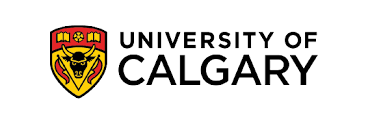University of Calgary partnership to drive solution for social work students interested in health-care
Last winter the social work field education teams from University of Calgary and MacEwan University came together with Alberta Health Services to work on a common goal: create more meaningful experiential (practicum) experiences for students in health care.
Social workers are Canada’s largest group of mental-health providers and make up the largest group of health professionals in the health-care system. There are over 50,000 social workers in Canada providing a range of services to support health and mental-health outcomes, while also addressing social determinants of health at the community, family, and individual level.
And the demand for social workers only continues to rise. It’s the most-needed profession in Alberta, and the Canadian government estimates that over 27,000 social workers will be needed between now and 2028.
As you might expect, front-line social workers in health care are very, very busy. While many would like to give back to the profession by supervising a practicum student, not many have the time to be the sole supervisor for the more than 400-or-so hours of a typical field education placement.
Field education is the heart of social work education — the opportunity for students to put theory into practice and learn first-hand what practice is like. So, finding more opportunities for future social work students in health care is critical.
New model provides experience in different areas of health care
Working collaboratively, the three partners developed a unique “rotational” approach that sees students move through a variety of units at the hospital in three-week intervals, gaining exposure to a range of experiences and areas of practice.
“We have to learn to really work with people,” says UCalgary Bachelor of Social Work (BSW) student Meera Kassam. “You really encounter new things or new obstacles every single day, and it really does focus collaboration and communication.”
Uchenna Ejeana, who, like Kassam, is in her final year of her UCalgary BSW, says that although she has previous experience in the health-care system, she too has found great value in the unique practicum approach.
“As a student, you are mindful how you build relationships,” she says. “As you build relationships with patients, you’re also building relationships with your fellow social workers. You have to be mindful of these things to be able to adapt and cope in your environment.”
New ways of doing things was needed
The new program required all the parties involved to set aside the traditional ways of securing practicums for their students, an inherently competitive process.
“I think that the idea of collaboration — not only between the post-secondary institutions, but also with Alberta Health Services — is just so inspiring to see.”
– Andrea Oiffer
Oiffer is a UCalgary field instructor who was hired specifically to oversee the program. “As students flow through the different units and meet different individuals, they are also networking and growing their resources,” she says.
“We (MacEwan University and UCalgary) conceptualized this program together from the very start,” adds Kealey Dube, MSW, an assistant professor at the MacEwan University School of Social Work.
“We both have a lot of students who are really interested in health-care practicums, and we were looking to create innovative ways to support additional students in a health-care practicum, while reducing the barriers identified by folks in the field.”
Rotational approach achieved goals
The early returns from the pilot project, which concluded in the spring, were very strong, confirms Stephanie Grant, MSW, RSW, a development specialist with the UCalgary field team. The pilot underlined the promise of collaboratively creating field education experiences that could be applied in other health-care settings or similar large agencies and organizations.
“I think the rotational approach really achieved what we hoped it would,” says Grant. “Students reported a quality front-line experience, and the pilot proved to be an effective way to reduce some of the barriers that regularly exist within field education, including supervision and competition among post-secondary institutions.”
Grant says she’s hopeful that the positive feedback and learning from this collaboration will lead to the collaborative rotational model growing, scaling up, and bringing more partners on board. It’s a true win-win outcome for everyone involved, and it comes at a time when every field placement is critical.
The hope is that new thinking like this will help to defuse what some have described as a “crisis” in social work field education — the struggle to find enough meaningful placements for students, that are aligned with social work values, ethics, and required educational outcomes.
“Field education is the heart of social work education,” says Dube “and it is experiencing intense pressures in the community. Coming together with our many planning discussions really underlined that we all have the same goal. We all want to provide students with an amazing learning opportunity that also supports front-line social workers.
“When we came to this project, with those two priorities in place, we were able to work flexibly, and very collaboratively. We’ve developed a conceptual model that I think can transform what we see in field education in Canada. I’m not sure of another program across the country that is doing this. Certainly not in this collaborative way.”

